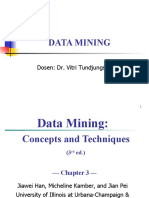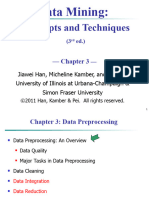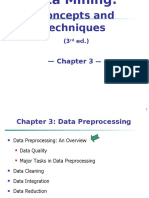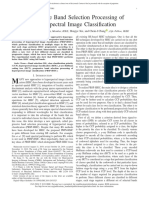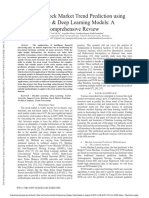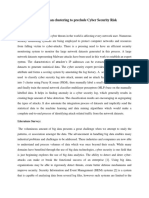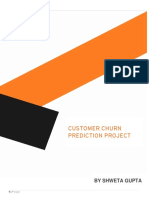0% found this document useful (0 votes)
76 views63 pagesPreprocessing Techniques
This chapter discusses data preprocessing techniques. It covers data cleaning which involves handling incomplete, noisy and inconsistent data through techniques like filling in missing values, smoothing noisy data, and resolving inconsistencies. It also discusses data integration which combines data from multiple sources, and data reduction which reduces data dimensionality and size through techniques like discretization and compression. The chapter provides examples and details about how to apply these preprocessing steps.
Uploaded by
rekhaCopyright
© © All Rights Reserved
We take content rights seriously. If you suspect this is your content, claim it here.
Available Formats
Download as PDF, TXT or read online on Scribd
0% found this document useful (0 votes)
76 views63 pagesPreprocessing Techniques
This chapter discusses data preprocessing techniques. It covers data cleaning which involves handling incomplete, noisy and inconsistent data through techniques like filling in missing values, smoothing noisy data, and resolving inconsistencies. It also discusses data integration which combines data from multiple sources, and data reduction which reduces data dimensionality and size through techniques like discretization and compression. The chapter provides examples and details about how to apply these preprocessing steps.
Uploaded by
rekhaCopyright
© © All Rights Reserved
We take content rights seriously. If you suspect this is your content, claim it here.
Available Formats
Download as PDF, TXT or read online on Scribd
/ 63
















